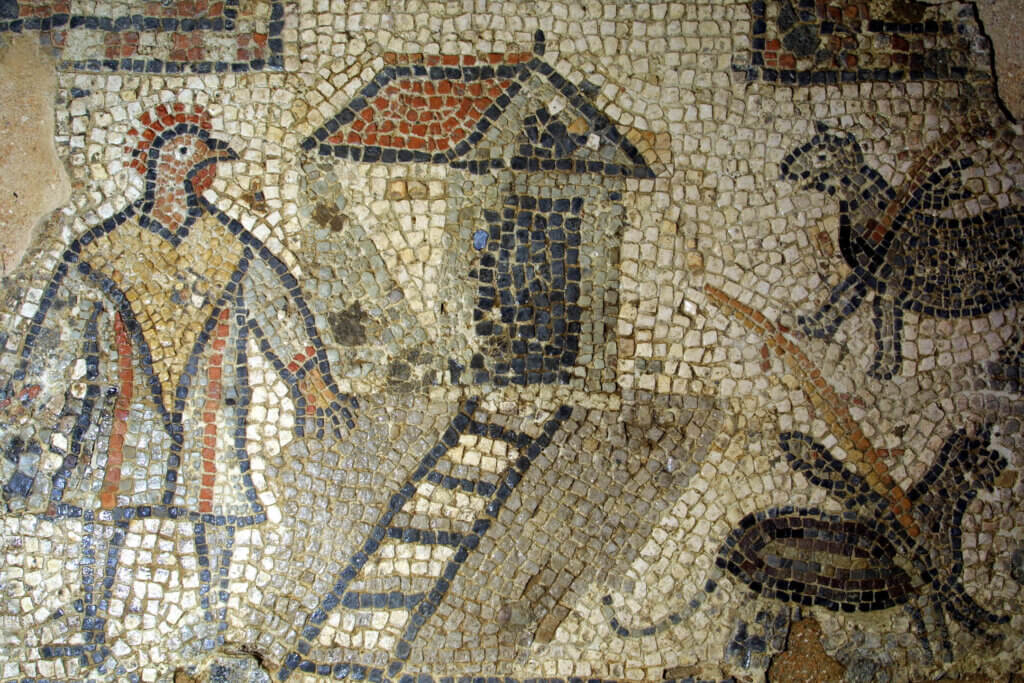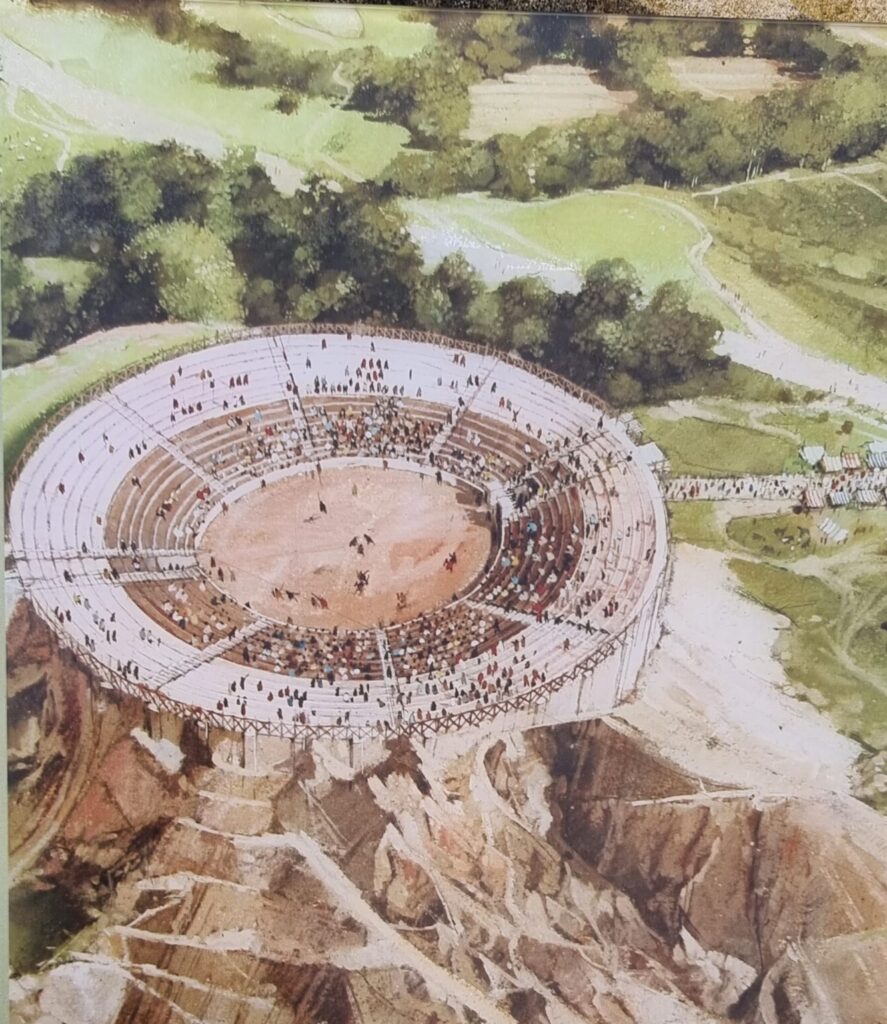The Isle of Wight was subjegated by the general, and eventual emperor, Vespasian in AD 44. In the successive centuries a number of villas emerged, perhaps the most well known being Brading Roman Villa.
Though started in the 1st century AD further buildings were added and by the 4th century the villa was well established and certainly a grand place to live. Needless to say mosaics featured and one features a very strange character.

The character on the left has a human torso but the head of a cockerel. Why so and what’s the scene showing us? Well, it has been disputed but one theory is that this represents a scene from a beast hunt or ‘venatio’. These were hugely popular in Rome and you can note two beasts on the right of the mosaic with the portus (gateway) into the arena floor. What bolsters this idea further is that the cockerel-headed figure is wearing an outfit similar to that worn by a hunter in such an event.
Who was this strange figure? Well, one theory is that it represents an emperor of the 4th century, a character called Gallus. He was famed for his love of the games and ‘Gallus’ can mean ‘cockerel-headed’. This mosaic lampooned the former emperor, though it should be noted this was most likely put inp lace after his death. Given the amount of graffiti which took aim at politicians in ancient Rome why not a mosaic?
Here’s a good video on it incase you want to learn more.


